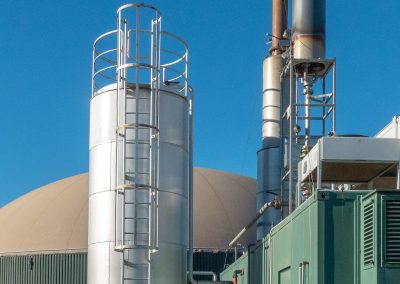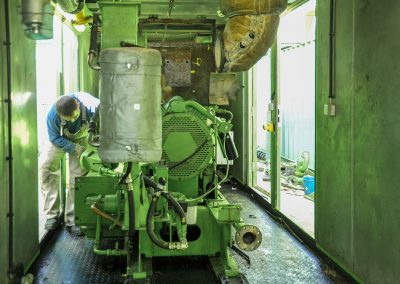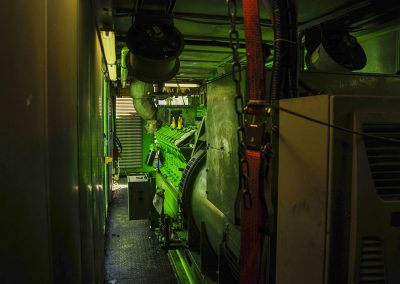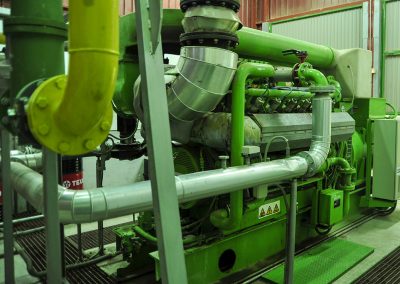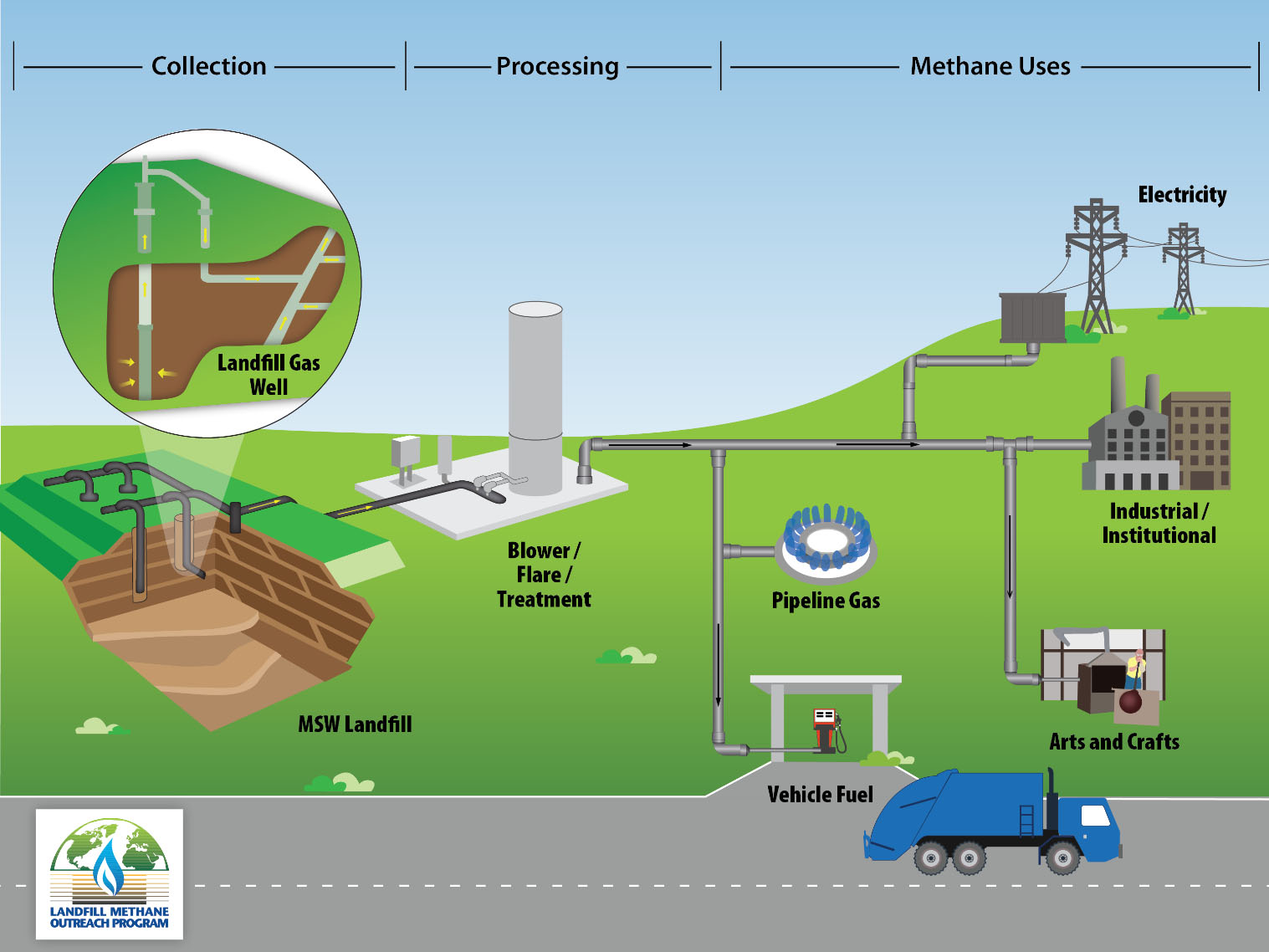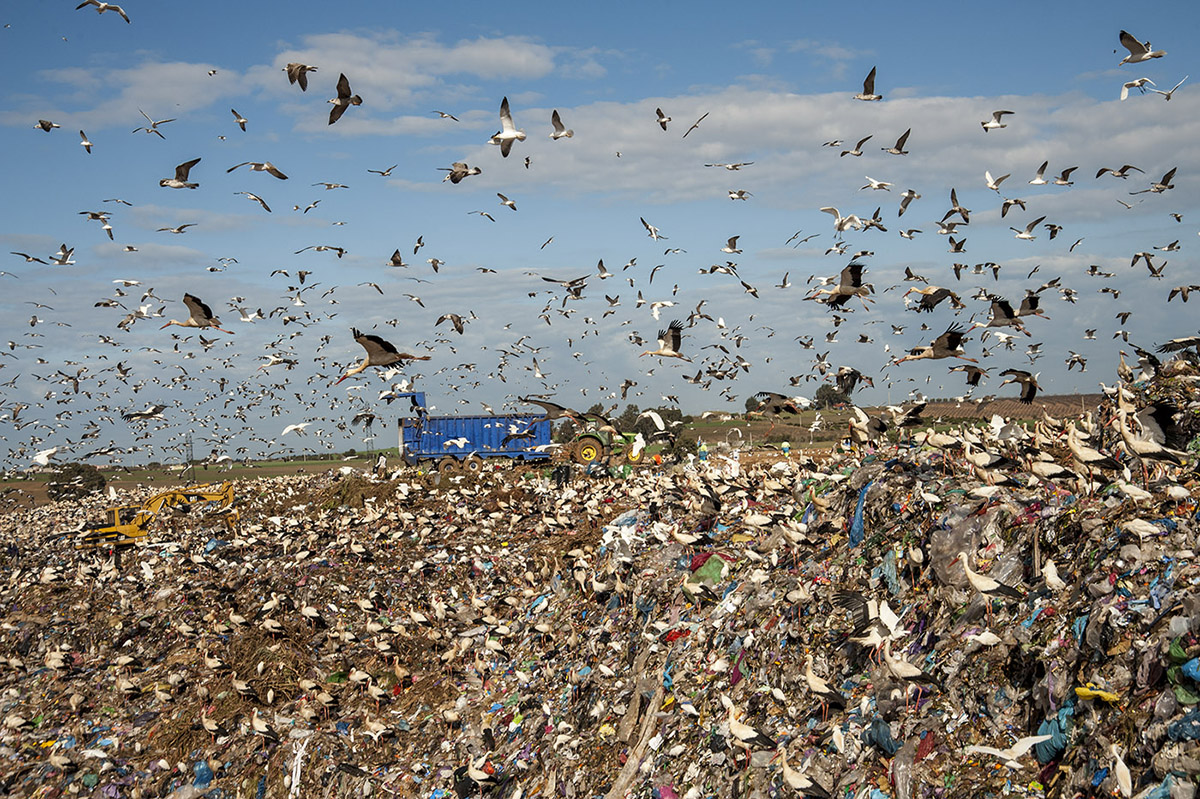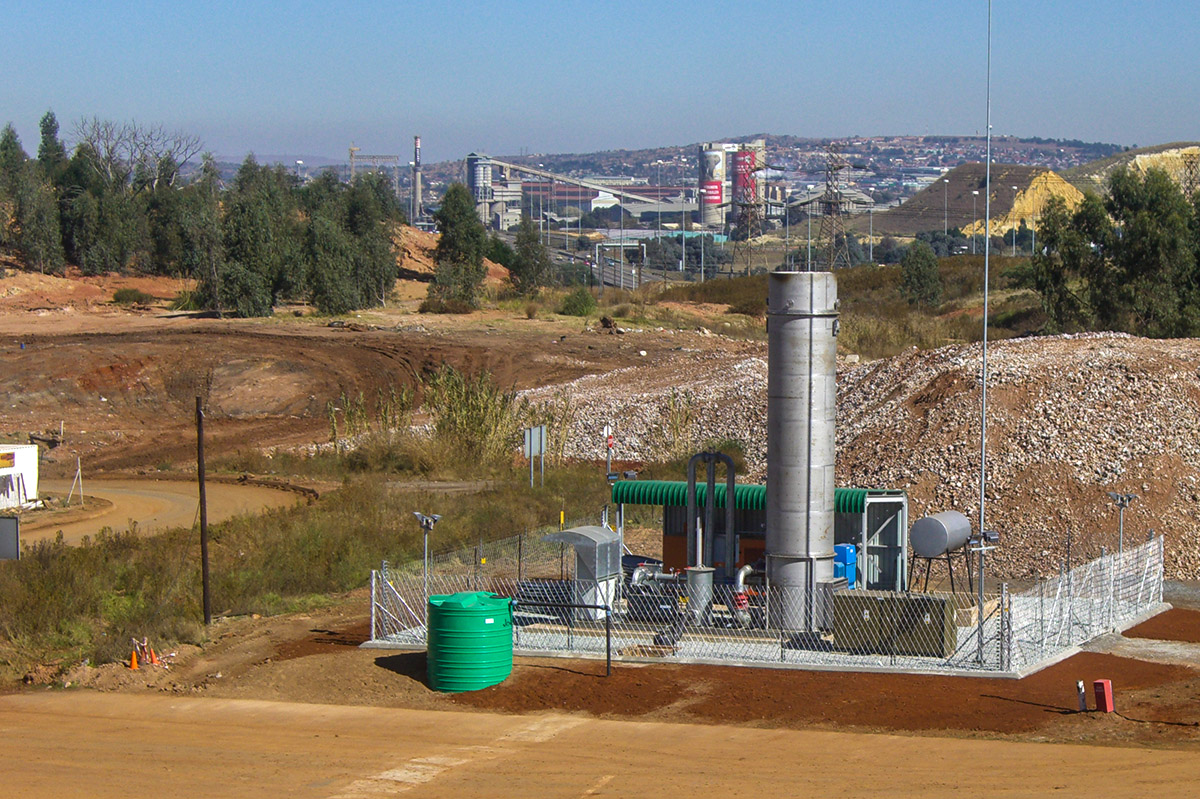Electricity Generation
Electrical energy production from biogas is now a mature technological process that has avoided the emission to atmosphere of hundreds of thousands of tons of carbon dioxide. Organics has designed and built many power generation plant around the world and offers consultancy and post-installation services that ensure optimisation of an increasingly valuable resource.
Stylised image for the production of energy using landfill biogas. From the US EPA, when they believed in such things.
Biogas for Electricity Production
Over the past forty years and in many projects biogas, produced from the degradation of organic waste material, has been proven to be a valuable fuel that not only removes a highly contaminating gas from the atmosphere but also displaces the use of fossil fuel for the generation of electricity.
Biogas is formed under anaerobic conditions in the absence of oxygen and is commonly known as marsh gas because of its noxious smell; the result of entrained trace elements.
But methane is also used as a fuel. If it is treated and cleaned, biogas can also be used for a fuel that can displace traditional fossil fuels as a source of energy for power or heat production.
The use of biogas for electrical production ensures that waste material generated from our daily lives is effectively recycled. This is the basis of the circular economy
Biogas, although a small part of the spectrum of renewable energies currently being rolled out around the world, is an important and highly visible addition to the armoury of weapons that can be used against short-term climate change
LFG Biogas Production
Biogas is produced under anaerobic conditions in the mass of a landfill site.
Factors influencing LFG production
Landfill biogas is formed principally from the organic component of landfill waste and, as the well-known graph accompanying this section indicates, there is a period of stabilisation as the air within the waste mass is used up before firstly, carbon dioxide is produced and secondly, methane production commences and increases in importance.
The common factors that The factors that govern the composition of LFG within the lifecycle of the landfill typically include:
- Waste composition (in particular degradable organic material)
- Time within the landfill
- Moisture content of the waste and the distribution of moisture within the waste mass
- pH and temperature of the waste
- Nutrient availability (to feed the microbes)
- Presence of toxic chemicals that may inhibit the growth of the methanogenic bacteria
During the phase in which the landfill gas can be considered commercially viable, the biogas generated will contain around 40 – 60% Methane (CH4), 30 – 40% Carbon Dioxide (CO2) and a wide variety of trace gases, many of which are harmful to human health and machinery.
Graphical representation of LFG production.
Practical applications of using landfill gas and anaerobic digestion biogas as a fuel include the generation of electrical energy and the displacement of the use of fossil fuel.
Biogas Production
Biogas may be produced from many different biodegradable organic substrates and the feedstock dictates the biogas technology to be used.
In any project that uses biogas as its principal source of fuel, it is important to undertake a comprehensive analysis of all conditions including the substrate from which the biogas is produced and whether or not specialist technology, such as H2S removal equipment, must be employed in cleaning and filtration.
Uses of biogas can range from power and heat generation to the production of a natural gas for injection into regional pipelines or for compression as a vehicle fuel.
Power Production Options
Biogas can be used in a variety of ways for the production of energy. Not only can it be used directly as a fuel for power generation once it has been conditioned and cleaned, it can also be used for the production of steam for use in steam turbine engines or directly as heat production. On many landfill sites, biogas is used for the evaporation of leachate or for providing heating for on-site offices.
One of the technologies that has recently been gaining traction is the use of biogas as an alternative fuel for vehicles, mainly fleet vehicles such as buses or lorries. As the technology has now been developed to clean biogas to natural gas specification, it can now be fed directly into natural gas pipelines.

ORGANICS GROUP
Please consult the following pages before using our site:
Organics Privacy Policy
Data Privacy and Protection Policy
CONTACT
Please contact us for further information
SOCIAL MEDIA

